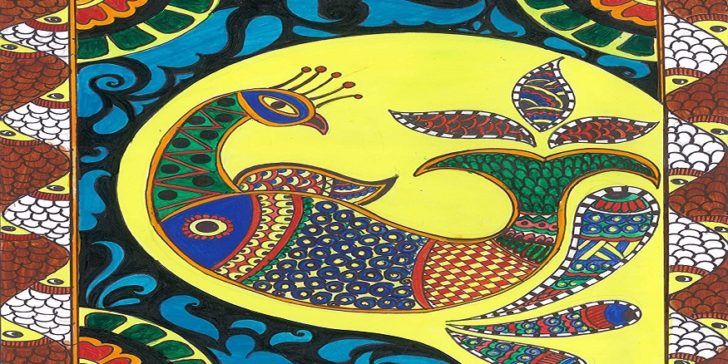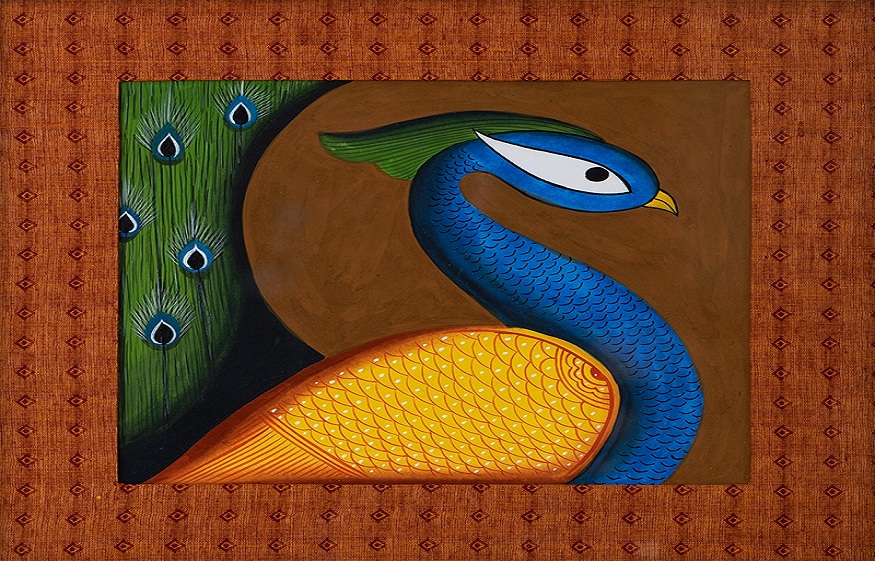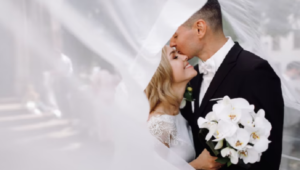[ad_1]

396 Views
Each artwork type has a singular high quality that exalts it to extraordinary fame and splendour. That is additionally the case with Indian artwork types. Every classic indian artwork type has its personal set of motifs and stylistic options that set it aside from the remaining. It’s these little symbols and themes that accord that means to each piece of artwork created in a specific style of artwork.
Listed here are 5 Indian artwork types and the motifs which have made them widespread:
1. Madhubani Portray
Madhubani could also be a 2500-years outdated artwork type, however its therapy of recent topics retains it related even in the present day. Madhubani artwork originated throughout Raja Janak’s reign as individuals decked up town of Mithila to commemorate Lord Rama and Sita’s wedding ceremony. Madhubani portray is, maybe, the oldest type of graffiti, because it began as Bhitti Chitra, i.e., wall artwork. There are 5 types of constructing Madhubani artworks: Bharni, Kachni, Tantric, Godhana and Kohbar.
Probably the most distinctive aspect of motifs utilized in Madhubani artwork portray is that they’ve a Feng Shui connection. Madhubani well-known work use auspicious symbols and motifs that make this artwork type good for adorning your house. Each inch of the canvas is full of stunning geometric patterns and motifs like fish, lotus plant, sacred symbols, fish, parrots, birds, peacocks, tortoises are widespread in Madhubani artwork. Fish represents wealth and prosperity whereas peacocks are the harbingers of fame and sweetness, in keeping with Feng Shui. Lotus brings residence good luck and fortune whereas the tortoise symbolizes lengthy life, peace and knowledge in Madhubani artwork.
2. Kalighat Portray

Kalighat artwork was popularly bought as souvenirs for British vacationers and officers visiting India on official responsibility. It was born as a condensed type of Pattachitra work, however quickly developed its personal options. Kalighat artwork is known as after the Kalighat space of Bengal and differed from Pattachitra by having lesser characters and extra empty areas. Therefore, a Kalighat portray will all the time concentrate on one or two collectible figurines, as an alternative of narrating elaborate tales from mythology and folklore.
Painted on mill-made paper, a Kalighat portray was distinctive in its depiction of Indian gods and goddesses, widespread folktales and non secular epics. When it comes to motifs, Kalighat artwork might be divided into two types: Oriental and Occidental. Oriental Kalighat Work narrate scenes from Hindu texts and non secular tales. These tales are depicted by portray hindu gods and goddesses like Goddess Durga, Radha-Krishna, Hanuman, Shiva-Parvati, and many others. An Occidental Kalighat portray depicts comparatively up to date scenes like tales from the liberty wrestle, the babu tradition, a girl enjoying sitar, and many others.
3. Pichwai Portray
Pichwai work had been historically used to brighten the wall behind the deities in Rajasthan’s Nathdwara temple. Therefore, most Pichwai well-known work are devoted to Srinathji, an avatar of Lord Krishna as a 7-year-old toddler. Pichwai artworks might are typically barely crowded however not one of the components are allowed to overshadow the principle topic—Lord Krishna. Pichwai artwork normally has a vibrant color palette consisting of purple, yellow, black and inexperienced colors. A few of Pichwai most well-known artworks have emerged by cutting down these ornate work into smaller nuggets of artwork like cushion covers, coasters, bedsheets, and many others. These are all the time brimming with auspicious motifs and vibrant hues.
One of the vital distinct options of Pichwai artworks is Chowbees Swaroop—Krishna’s 24 divine avatars, normally painted alongside the borders of a Pichwai portray. Different widespread motifs in Pichwai artwork embrace lotuses, cows, bushes, peacocks and gopis. Totally different types of flora like bushes and lotuses are supposed to provide Lord Krishna some respite from the warmth. Cows are an essential motif since they symbolize Krishna’s life as a gwala (cattle herder). MorkutiPichwai work present peacocks welcoming the wet season by dancing—just like scenes from the Raasleela.
4. Pattachitra Portray
Pattachitra artwork work had been initially used within the Jagannath temple to exchange the first deities for a 15-day interval—Anasara. Immediately, Pattachitra artwork has develop into an essential a part of transmitting folktales and the inventive custom of India. The Raghurajpur village in Orissa is the epicentre of Pattachitra artwork in India, as this heritage village thrives on Pattachitra work and knick-knacks on sale. Chitrakars don’t make tough sketches for Pattachitra artwork with pencils or charcoal, and use paint on the canvas instantly.
In a Pattachitra portray, the smallest of areas is full of symbols and motifs. Birds, snakes, lotus, lilies and different water crops make frequent appearances on a canvas of Pattachitra artwork. The Jagannath temple and its presiding deities—Jagannath, Subhadra and Balabhadra, are an important motifs in Pattachitra artwork. A Patta portray may depict scenes from the Krishna Leela, a cosmic dance with gopis dancing round Lord Krishna in a circle whereas he stands within the centre with Radha. The PanchamukhiGanesha and 10 incarnations of Lord Vishnu are different widespread motifs utilized in Pattachitra artwork.
5. Classical Indian Artwork.
The great thing about Classical Indian Artwork lies in its innate potential to move you to a bygone period and makes each scene come alive. Other than being an integral a part of our inventive legacy, these work additionally act as professional historic paperwork and literature. Classical Indian work grew to develop into a favorite at royal courts because it grew to become part of royal households, who even commissioned a lot of them. Immediately, Classical Indian Artwork is split into 4 faculties of artwork—Mughal, Rajastganim, Pahari and Deccani.
The Mughlai college of Classical Indian artwork is alleged to have originated throughout Humayun’s reign, when he invited Persian artists, Mir Sayyid Ali and Khwaja Abd al-Samad, to India. Mughal work had been closely influenced by Persian artwork, as might be seen by means of the structure and clothes in these work. The Rajasthani college of artwork took form within the Seventeenth-18th century royal courts of Rajputana. This gave rise to beautiful Rajasthani miniature work that used conventional motifs and themes like festivals, seasons, social events, courtly scenes and searching scenes. Although the Deccani college of Classical Indian artwork was additionally formed by Persian influences, additionally they borrowed stylistically from European artwork. Considered one of its most distinct motifs is the composite animal—one massive animal created with pictures of a number of small animals. Pahari work, because the identify suggests, depend on pure motifs and sceneries.
[ad_2]




More Stories
Components of selecting various kinds of glues for PVC piping
6 Fast Ideas for Storage Door Upkeep
Do Entry Mats Provide Higher ROI, Let’s Discuss!